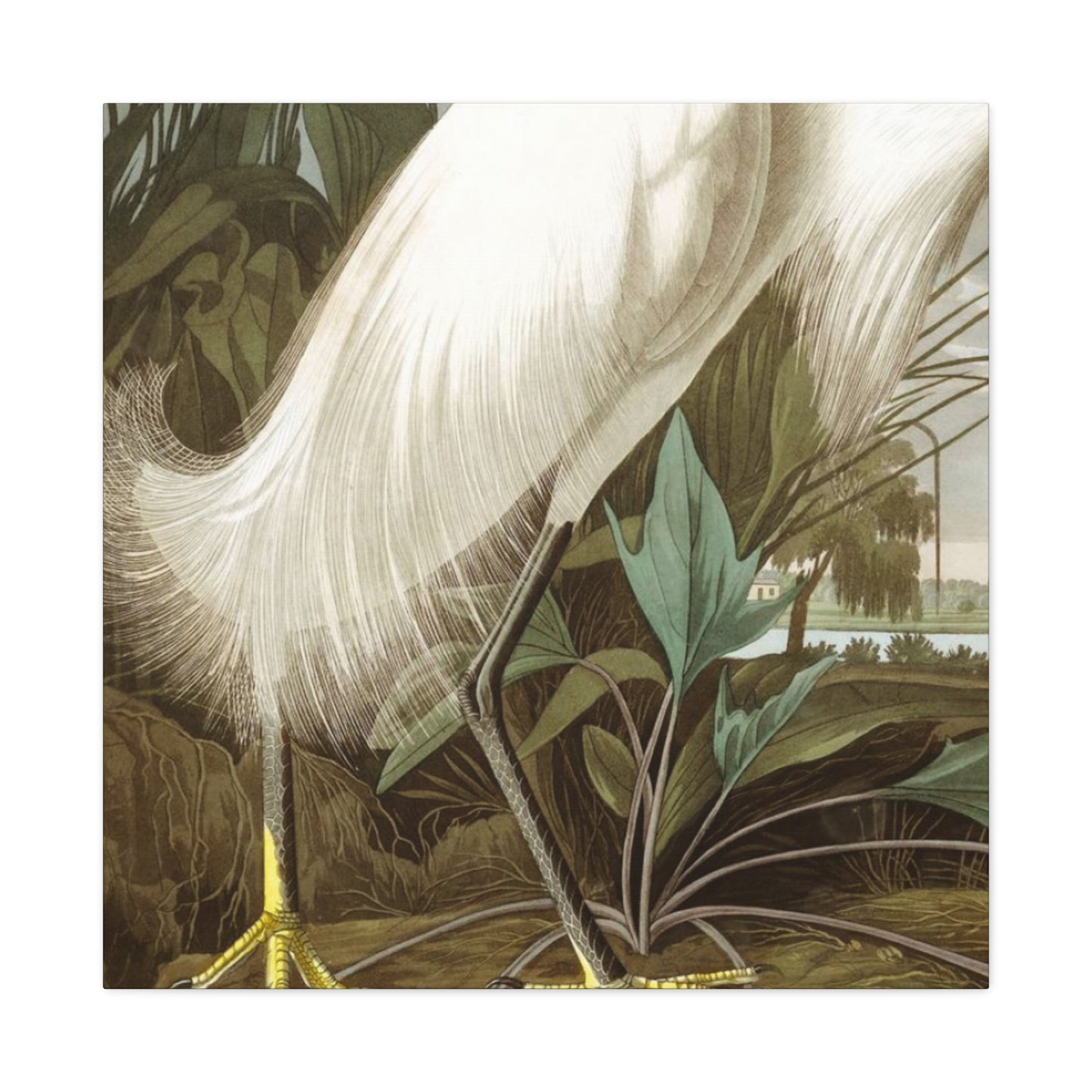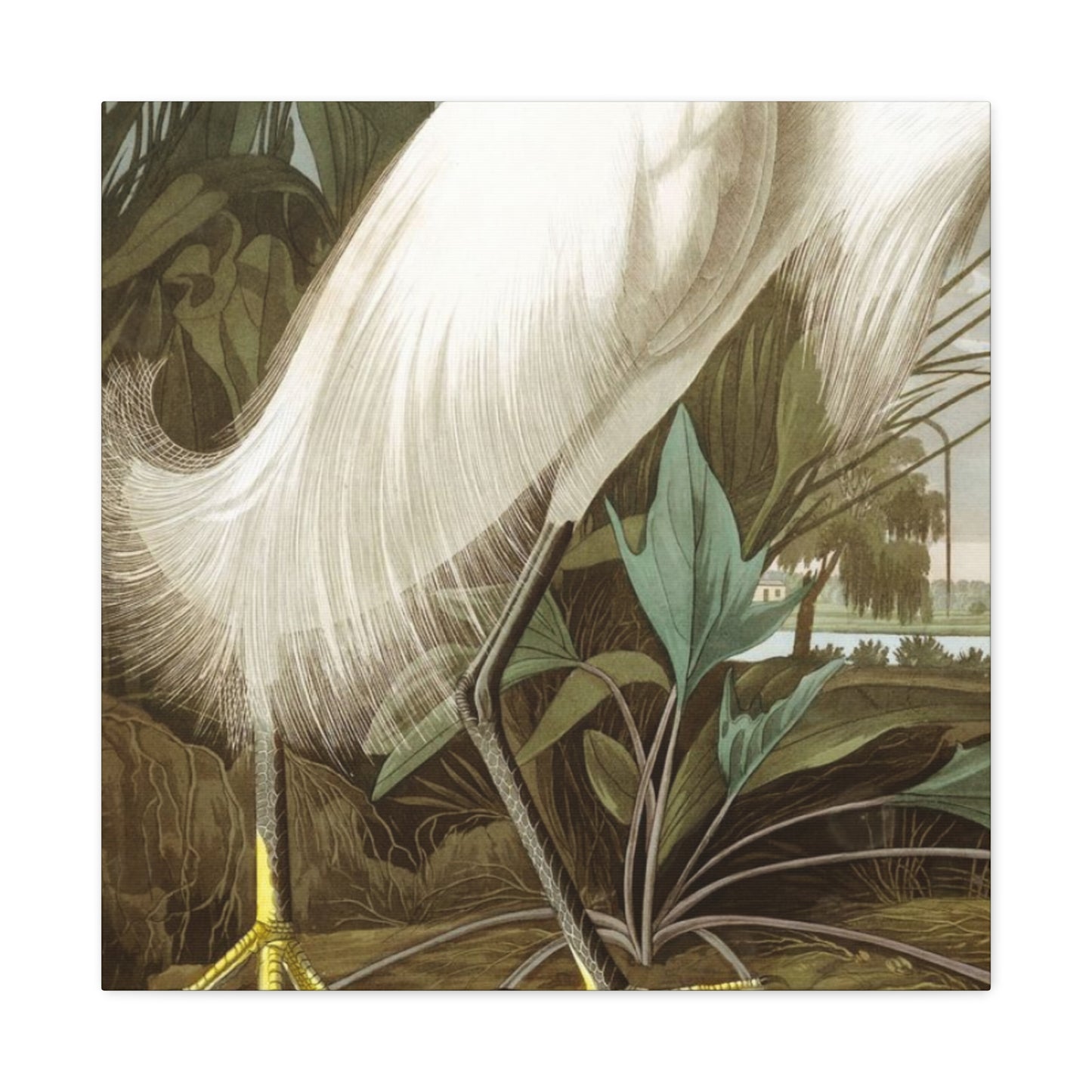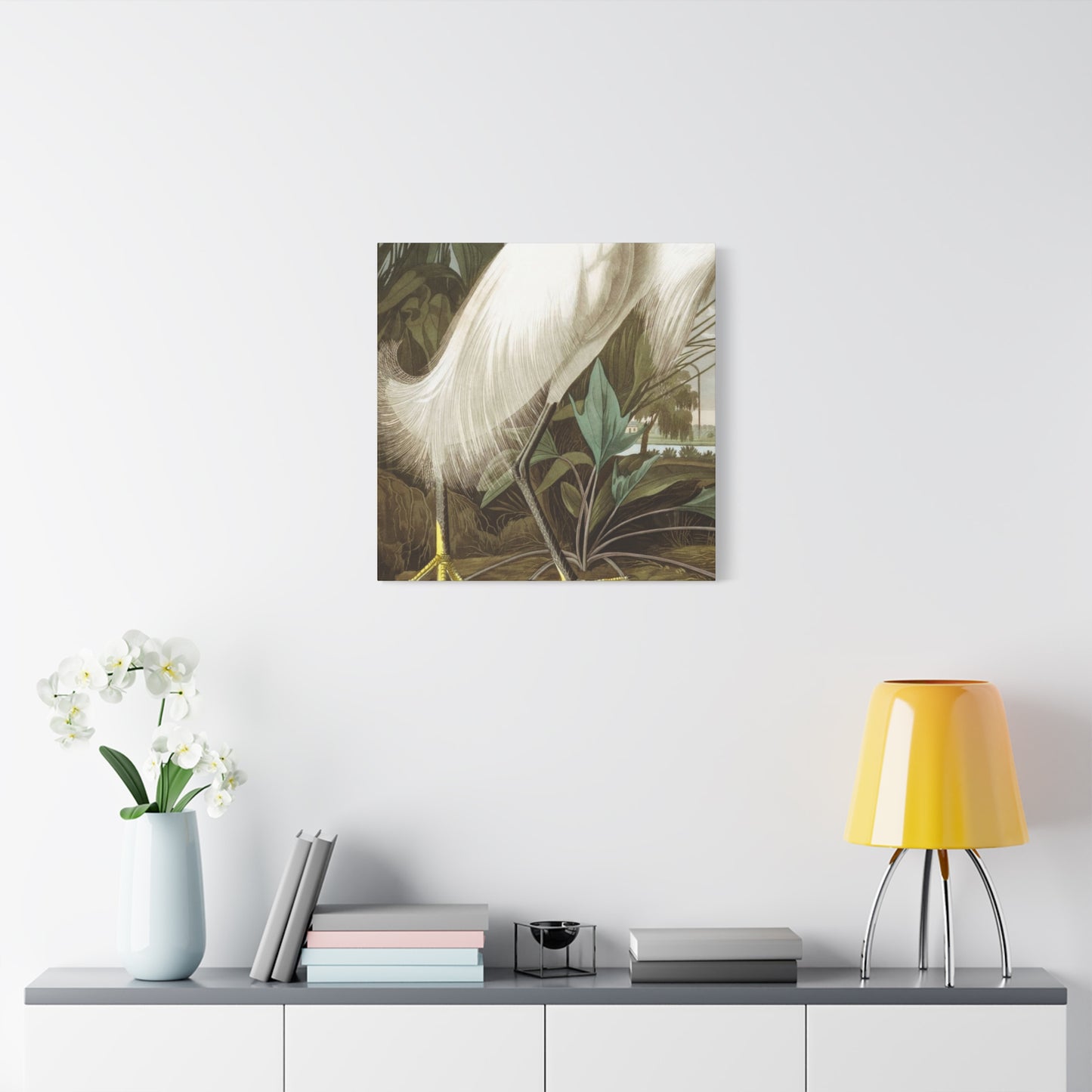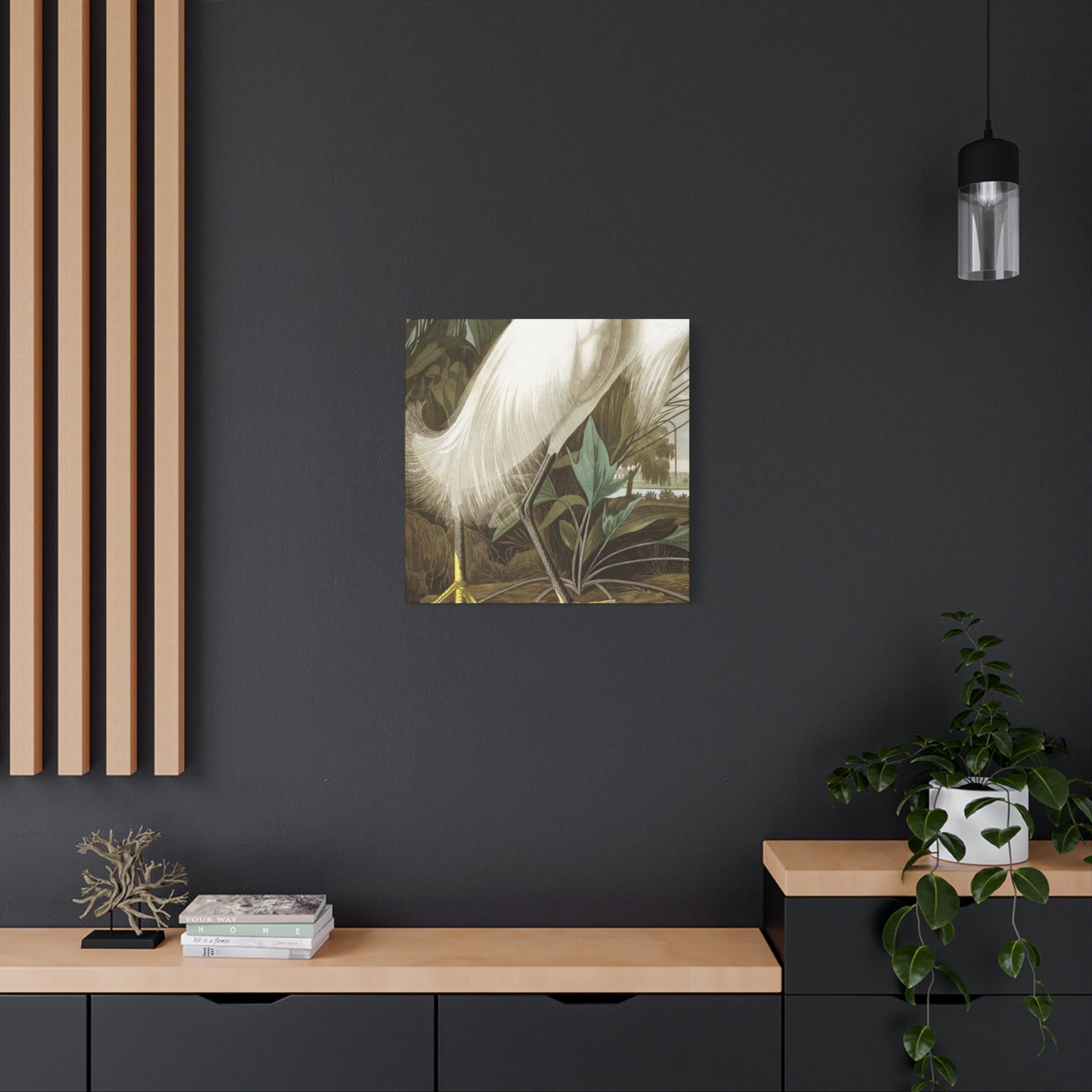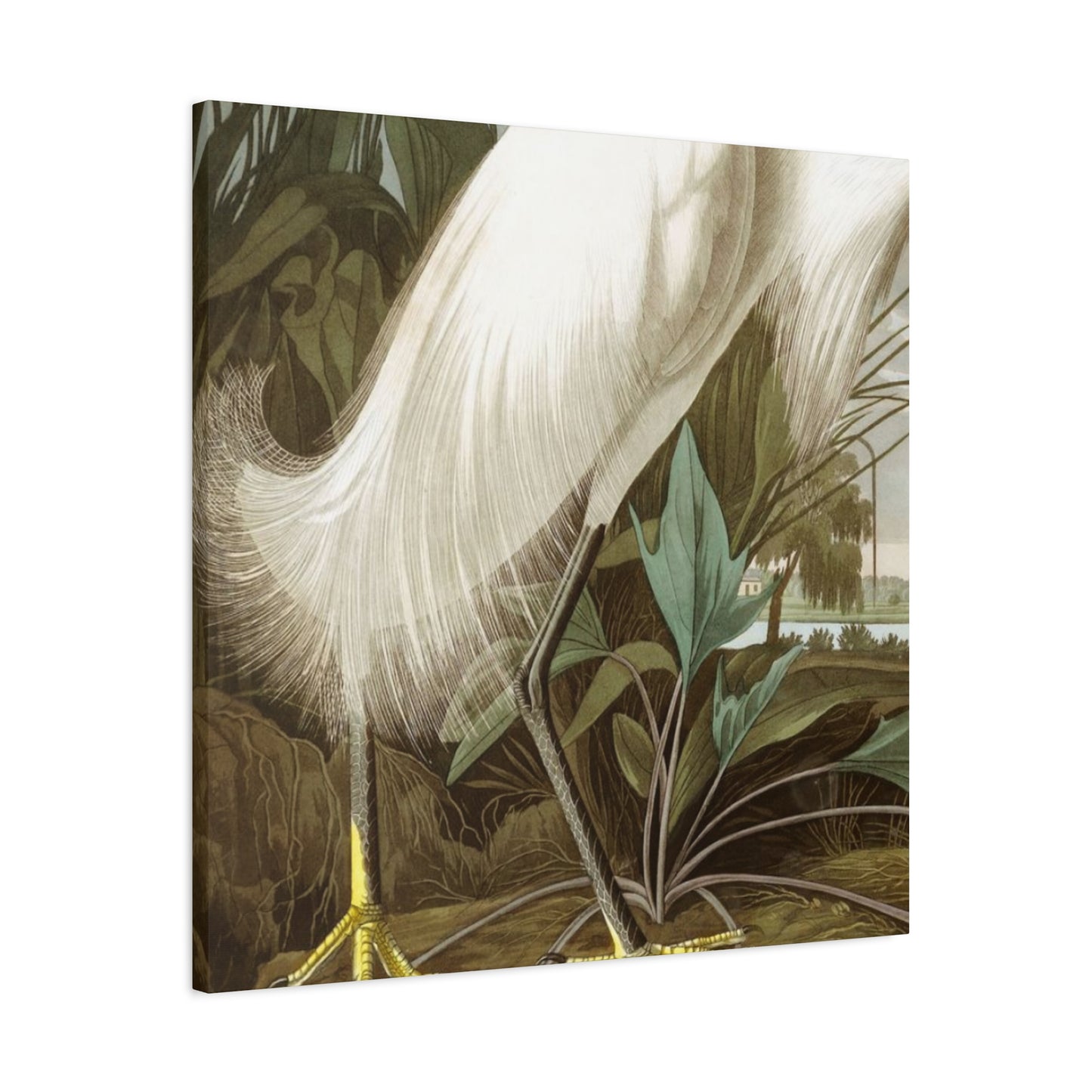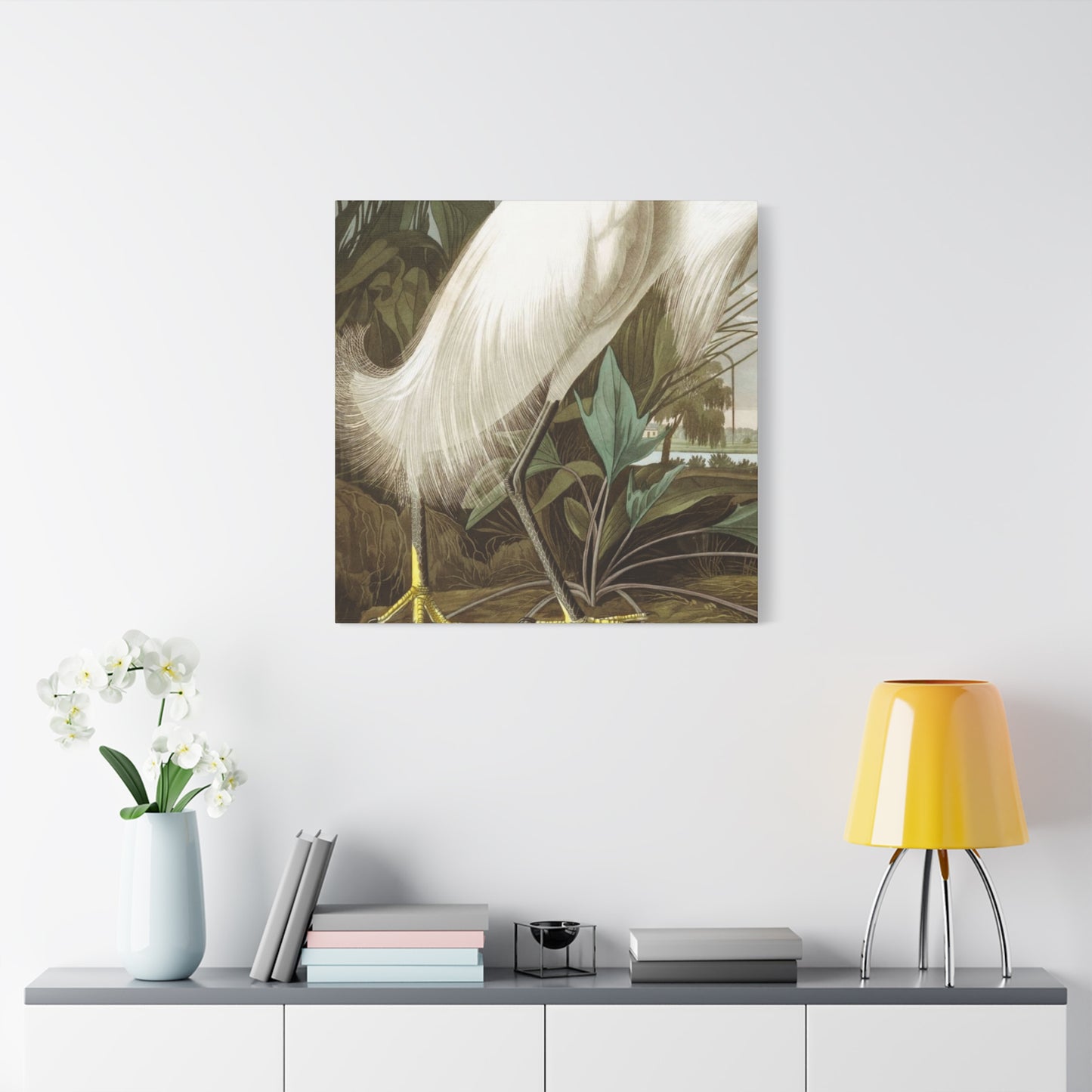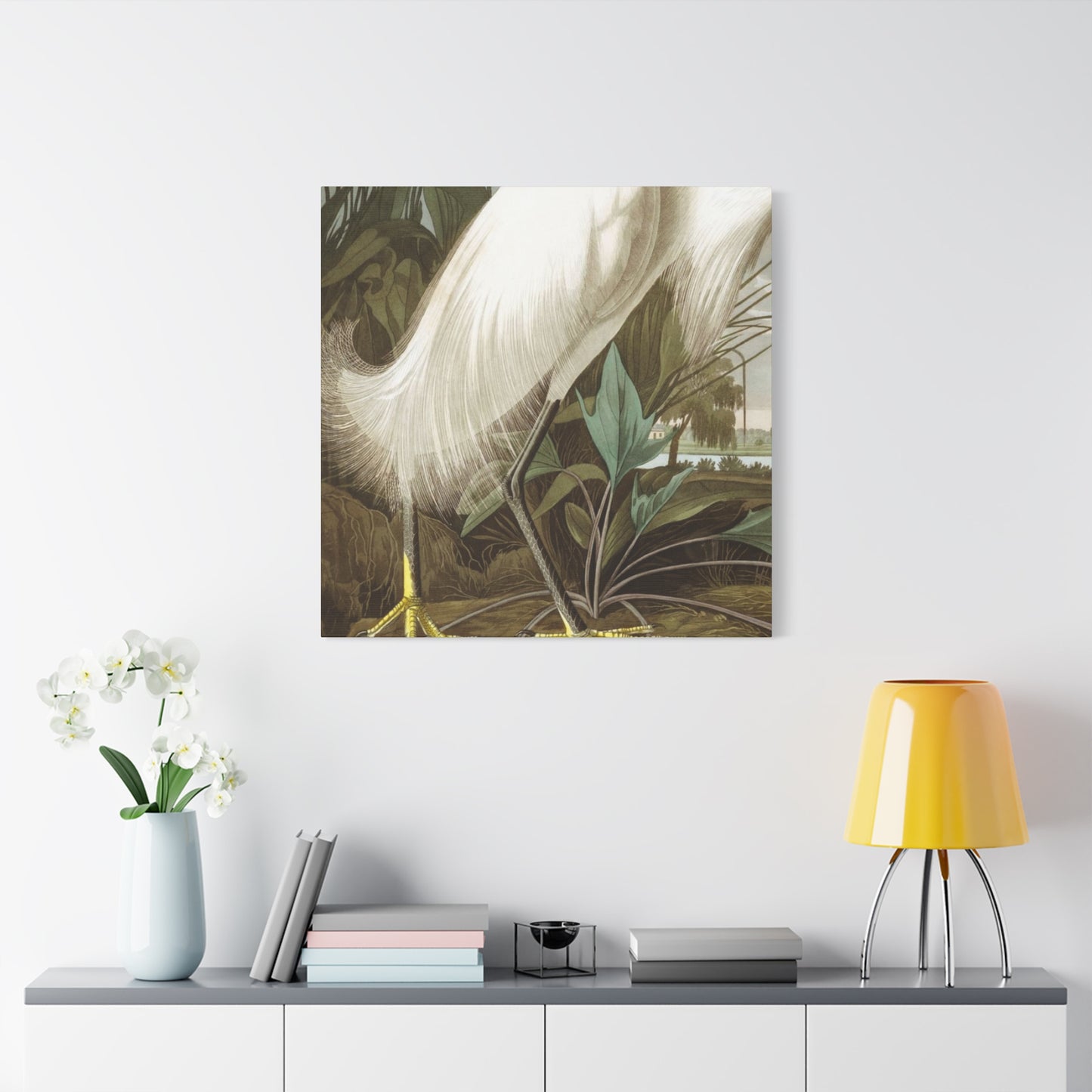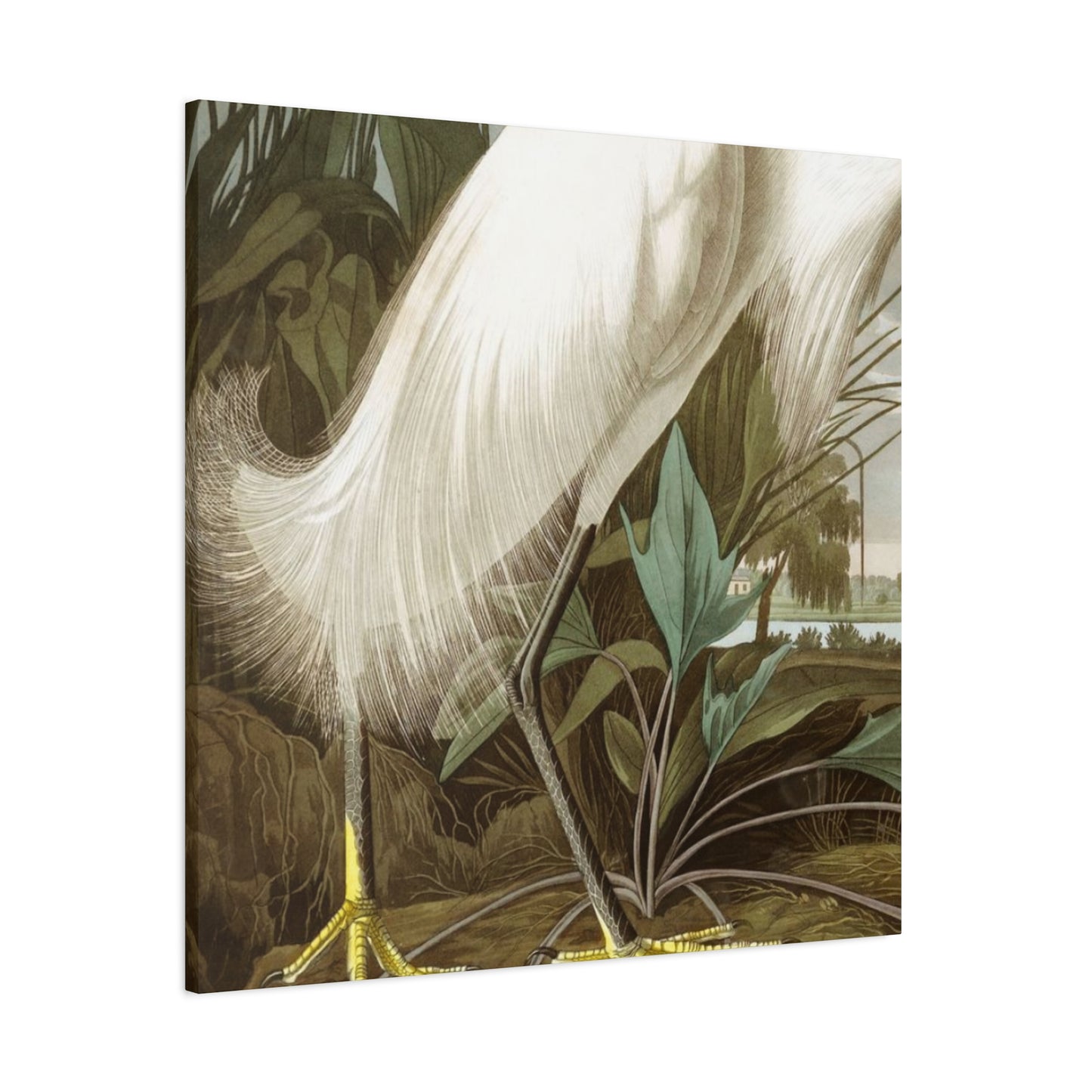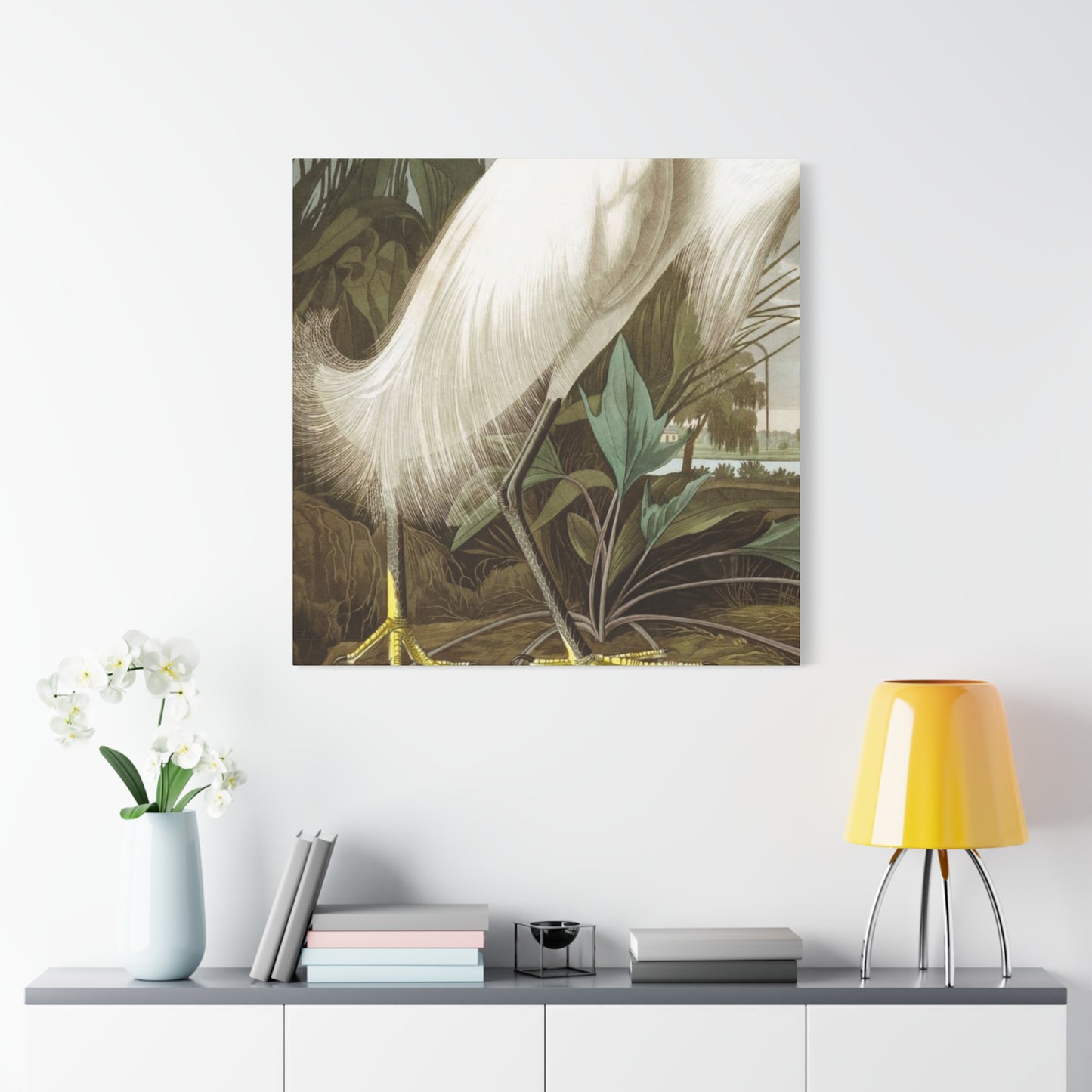Modern Living Meets Nature: Golden Feet Herons Wall Art for Stylish Interiors
Golden feet herons wall art canvas prints represent one of the most captivating and sophisticated choices for contemporary home decoration. These magnificent bird artworks capture the essence of nature's most elegant wading birds, featuring their distinctive golden-colored legs that give them their distinctive name. The beauty of herons has inspired artists for centuries, and modern canvas printing technology allows homeowners to bring these stunning creatures into their living environments with unprecedented clarity and vibrancy.
The appeal of golden feet herons wall art extends beyond mere aesthetic value. These birds symbolize patience, wisdom, and tranquility in many cultures, making their artistic representations perfect for creating serene and contemplative atmospheres in residential and commercial settings. Canvas prints featuring these majestic creatures offer durability, visual impact, and versatility that traditional paper prints cannot match.
Modern printing techniques have revolutionized how we experience wildlife art in our homes. High-resolution digital printing on premium canvas materials ensures that every feather detail, every reflection in the water, and every subtle color gradation of the heron's golden feet is preserved with museum-quality precision. This technological advancement means that golden feet herons wall art canvas prints can rival original paintings in their visual impact while remaining accessible to a broader range of art enthusiasts.
The growing popularity of nature-themed artwork reflects a deeper human connection to the natural world, especially as urbanization continues to separate us from wildlife encounters. Golden feet herons wall art serves as a bridge between our indoor environments and the natural world, bringing the serenity and beauty of wetland habitats into our daily lives. These canvas prints offer a way to celebrate biodiversity while enhancing our living environments with meaningful, visually striking artwork.
Exploring the Natural Beauty of Golden Feet Herons
Golden feet herons, scientifically known for their distinctive yellow to orange-colored legs, represent some of the most photogenic and artistically inspiring birds in the avian kingdom. These magnificent wading birds inhabit wetlands, marshes, and coastal areas worldwide, where their patient hunting techniques and graceful movements have captured the imagination of wildlife photographers and artists alike. Their distinctive coloring, particularly the vibrant golden hues of their feet and legs, creates striking visual contrasts against the blues and greens of their aquatic habitats.
The anatomy of golden feet herons makes them particularly compelling subjects for wall art. Their long, elegant necks can extend and retract with remarkable fluidity, creating dynamic S-curves that add movement and grace to any artistic composition. The sharp, spear-like bills are perfectly adapted for their fishing lifestyle, and when captured in canvas prints, they convey a sense of precision and focus that resonates with viewers. The interplay between their sleek body feathers and the distinctive golden feet creates natural color harmonies that complement a wide range of decorative schemes.
These birds exhibit fascinating behavioral patterns that translate beautifully into artistic representations. Their patient stance while hunting, often remaining motionless for extended periods, embodies qualities of meditation and mindfulness that many people seek to incorporate into their living environments. When golden feet herons are captured in motion, whether taking flight with their impressive wingspan or stepping delicately through shallow waters, the resulting images convey dynamic energy and natural rhythm.
The seasonal variations in golden feet heron appearance and behavior provide artists and photographers with diverse creative opportunities. During breeding seasons, many species develop enhanced plumage and more vibrant leg coloration, creating even more dramatic visual elements for canvas prints. The way sunlight interacts with their feathers and reflects off their golden feet creates natural lighting effects that skilled photographers and digital artists can enhance to create truly spectacular wall art pieces.
Environmental factors play crucial roles in creating compelling golden feet heron imagery. The birds' preference for dawn and dusk hunting periods means they are often photographed during golden hour lighting conditions, which naturally enhance the warm tones of their feet and create atmospheric backgrounds. Misty morning scenes, sunset reflections, and the interplay of light and shadow in wetland environments all contribute to the dramatic visual appeal of these canvas prints.
Canvas Print Technology and Quality Considerations
Modern canvas printing technology has reached unprecedented levels of sophistication, enabling the reproduction of golden feet herons wall art with exceptional detail and color accuracy. The foundation of quality canvas prints begins with the canvas material itself, typically made from cotton, polyester, or cotton-polyester blends. Each material type offers distinct advantages for wildlife art reproduction, with cotton providing natural texture and archival qualities, while polyester offers enhanced durability and color retention.
The printing process for golden feet herons wall art involves advanced inkjet technology using pigment-based inks that resist fading and color shift over time. These inks penetrate the canvas fibers rather than sitting on the surface, creating prints that maintain their vibrancy for decades when properly cared for. The color gamut achievable with modern printing systems allows for accurate reproduction of the subtle golden tones in heron feet, the complex patterns of their plumage, and the varied textures of their natural habitats.
Canvas preparation plays a crucial role in the final quality of golden feet herons wall art. Premium canvas materials undergo treatments to ensure optimal ink absorption and prevent bleeding or feathering of fine details. The weave pattern of the canvas affects how light interacts with the printed image, with finer weaves providing smoother appearance for detailed artwork while coarser weaves can add textural interest that complements the natural subject matter.
Stretching and mounting processes significantly impact the longevity and presentation of canvas prints. Professional-grade stretcher bars, typically made from kiln-dried wood, provide stable support that prevents sagging or warping over time. The stretching tension must be carefully calibrated to prevent canvas damage while ensuring a taut, professional appearance. Gallery wrap mounting, where the image extends around the edges of the stretcher frame, creates a modern, frameless presentation that many collectors prefer for contemporary wildlife art.
Color calibration represents one of the most critical aspects of producing high-quality golden feet herons wall art canvas prints. Professional printing services use calibrated monitors and standardized color profiles to ensure that the golden tones of the heron feet appear as intended by the artist or photographer. This attention to color accuracy becomes particularly important when reproducing the subtle variations in golden coloration that can range from pale yellow to deep orange depending on the species and lighting conditions.
Quality control measures throughout the printing process help ensure consistent results across multiple prints. This includes regular maintenance of printing equipment, monitoring of ink levels and quality, and careful inspection of each print before packaging. For golden feet herons wall art, particular attention is paid to the reproduction of fine details such as individual feathers, eye clarity, and the texture variations between different parts of the bird's anatomy.
Artistic Composition and Design Elements
The composition of golden feet herons wall art plays a fundamental role in creating visually compelling and emotionally engaging pieces. Successful compositions typically incorporate principles of visual balance, focal point creation, and movement that guide the viewer's eye through the artwork. The natural grace and elegance of herons provide artists and photographers with excellent opportunities to explore various compositional techniques that enhance the overall impact of the canvas prints.
Rule of thirds application in heron photography and art creates more dynamic and visually interesting compositions than centered subjects. Positioning the heron's body or head along the intersection points of imaginary grid lines creates natural focal points that draw viewer attention. This technique works particularly well for golden feet herons wall art because it allows the distinctive golden feet to occupy strategic positions within the composition while maintaining overall visual balance.
Leading lines represent another powerful compositional tool frequently employed in heron artwork. The bird's long neck, extended leg lines, or environmental elements like shorelines and reed patterns can create visual pathways that direct attention toward key elements of the composition. In golden feet herons wall art, these leading lines often emphasize the contrast between the bird's elegant form and its distinctively colored feet, creating visual tension and interest.
Color harmony considerations become particularly important when working with golden feet herons due to the warm tones of their legs contrasting with cooler environmental colors. Complementary color schemes, utilizing blues and oranges, create vibrant and energetic compositions, while analogous color schemes using various warm tones can create more subtle and harmonious effects. The natural coloration of golden feet herons provides artists with excellent opportunities to explore both approaches within the same piece.
Negative space utilization in heron compositions can be just as important as the subject itself. The areas surrounding the bird contribute to the overall mood and visual impact of the piece. Minimalist compositions with extensive negative space can emphasize the heron's solitary nature and create contemplative, zen-like effects. Conversely, more complex compositions with detailed environmental backgrounds can tell richer stories about the bird's habitat and behavior.
Depth creation through layering, perspective, and atmospheric effects adds dimensional quality to golden feet herons wall art. Foreground, middle ground, and background elements work together to create immersive scenes that transport viewers into the heron's natural habitat. Techniques such as depth of field variation, where the heron remains sharp while background elements blur softly, can create professional-quality artistic effects that enhance the overall sophistication of the canvas prints.
Movement capture in heron artwork requires understanding the bird's natural behavior patterns and selecting moments that convey grace and fluidity. Whether depicting the bird in patient hunting pose, mid-flight with wings extended, or stepping delicately through shallow water, the timing and framing of these moments significantly impact the emotional resonance of the final artwork. Golden feet herons provide particularly striking subjects when captured during takeoff or landing sequences, where their extended wings and prominent feet create dramatic silhouettes.
Color Psychology and Home Harmony
The psychological impact of color in golden feet herons wall art extends far beyond mere aesthetic appreciation, influencing mood, energy levels, and overall well-being of occupants in decorated environments. The warm golden tones of heron feet evoke feelings of optimism, warmth, and vitality, while the cooler blues and grays typically found in their natural habitats provide balance and tranquility. This natural color combination makes heron artwork particularly effective for creating harmonious living environments.
Golden colors in art therapy and psychology are associated with wisdom, enlightenment, and spiritual awareness. When featured prominently in golden feet herons wall art, these warm tones can energize a room without overwhelming it, making them excellent choices for living areas where social interaction and positive energy are desired. The natural origin of these colors in the bird's anatomy adds authenticity and connection to nature that synthetic color schemes cannot replicate.
Blue color elements commonly found in heron habitat backgrounds contribute calming and stabilizing influences to living environments. These cooler tones complement the warm golden feet colors while promoting relaxation and mental clarity. The psychological benefits of blue have been extensively documented, including reduced stress levels, improved focus, and enhanced creativity, making blue-dominant heron artwork particularly suitable for bedrooms, home offices, and meditation areas.
Earth tone integration in golden feet herons wall art creates grounding effects that help establish connection between indoor environments and the natural world. Browns, tans, and muted greens commonly found in wetland settings provide neutral backgrounds that allow the golden feet colors to shine while maintaining overall visual harmony. These earth tones promote feelings of stability, security, and connection to nature.
Color temperature considerations play crucial roles in how golden feet herons wall art interacts with existing room lighting and decor. Warm-toned artwork tends to advance visually, making rooms feel more intimate and cozy, while cooler tones recede and can make areas feel more spacious. The mixed warm and cool palette typical of heron artwork provides flexibility for various room sizes and lighting conditions.
Seasonal color preferences often influence artwork selection, and golden feet herons wall art offers year-round appeal through its balanced color palette. The warm golden tones provide comfort during colder months, while the cooler background elements offer refreshing qualities during warmer seasons. This seasonal adaptability makes heron artwork excellent long-term investments for home decoration.
Cultural color associations can enhance the meaning and impact of golden feet herons wall art in different settings. In many cultures, gold represents prosperity and good fortune, while birds symbolize freedom and spiritual transcendence. The combination of these symbolic elements in heron artwork can create deeper emotional connections for viewers who appreciate cultural and spiritual symbolism in their decorative choices.
Size Selection and Placement Strategies
Choosing appropriate dimensions for golden feet herons wall art requires careful consideration of room proportions, viewing distances, and intended visual impact. The scale relationship between artwork and its environment significantly affects the overall aesthetic success of the installation. Oversized pieces can overwhelm smaller rooms, while undersized artwork may appear insignificant in larger areas, making proper size selection crucial for achieving desired decorative effects.
Large-scale golden feet herons wall art, typically measuring 36 inches or larger in any dimension, creates dramatic focal points that command attention and can serve as room centerpieces. These substantial pieces work particularly well in spacious living areas, dining rooms, or master bedrooms where they have adequate wall area and viewing distance to be properly appreciated. The impressive wingspan and elegant proportions of herons translate exceptionally well to large format presentations that capture the majestic nature of these birds.
Medium-sized canvas prints, ranging from 18 to 36 inches, offer versatility for most residential applications. These proportions allow for detailed appreciation of the artwork while maintaining compatibility with standard furniture arrangements and room layouts. Medium-sized golden feet herons wall art works well in bedroom settings, home offices, hallways, and smaller living areas where impact is desired without overwhelming the available area.
Small-format heron prints, under 18 inches, serve important roles in creating cohesive design schemes and can be particularly effective when grouped in collections or series. Multiple small prints featuring different heron poses or compositions can tell visual stories while providing flexibility for arrangement and rearrangement as decorative needs change. Small golden feet herons wall art also works well in intimate settings such as bathrooms, reading nooks, or personal office areas.
Aspect ratio considerations influence both the visual impact and placement options for heron artwork. Vertical orientations complement the natural proportions of standing herons and work well on narrow wall areas or in rooms with high ceilings. Horizontal formats can capture the expansive nature of wetland habitats and flying herons while fitting well above furniture pieces such as sofas, beds, or dining tables.
Gallery wall integration allows golden feet herons wall art to work harmoniously with other artwork and decorative elements. The natural colors and subjects of heron prints typically complement landscape photography, botanical art, and other nature-themed pieces. Creating thoughtful arrangements that balance sizes, colors, and subjects can transform plain walls into sophisticated art displays that reflect personal taste and appreciation for natural beauty.
Height placement guidelines ensure optimal viewing angles and visual comfort for golden feet herons wall art. The center of artwork should typically be positioned at eye level, approximately 57 to 60 inches from the floor for average-height individuals. However, seating arrangements and room functions may require adjustments to these standard guidelines to ensure comfortable viewing from primary seating positions.
Lighting interaction considerations affect both the placement and presentation of canvas prints. Natural light sources can enhance the colors and details of golden feet herons wall art but may also cause fading over time if direct sunlight exposure is excessive. Artificial lighting, particularly track lighting or picture lights, can be used to highlight artwork and create dramatic effects that emphasize the three-dimensional quality of canvas prints.
Framing and Presentation Options
Contemporary presentation methods for golden feet herons wall art canvas prints offer numerous options for enhancing the visual impact and protecting the investment in quality artwork. The choice between framed and unframed presentations significantly affects both the aesthetic appearance and long-term preservation of canvas prints. Understanding the advantages and applications of different presentation methods helps ensure optimal results for specific decorative goals and environmental conditions.
Gallery wrap presentation, where the printed image extends around the edges of the stretcher frame, creates a modern, clean appearance that eliminates the need for traditional frames. This contemporary approach works particularly well for golden feet herons wall art because it allows the natural beauty of the subject to take center stage without competing visual elements. Gallery wrapped canvases can be hung directly on walls using simple hanging hardware, creating streamlined installations that complement modern decorative styles.
Museum wrap techniques involve stretching canvas over the frame edges with neutral colors or blank canvas borders, maintaining the professional appearance of gallery wraps while ensuring that no important image elements extend around the edges. This method works well for golden feet herons wall art where the composition benefits from defined borders and the artwork is intended to serve as a focal point within a larger decorative scheme.
Traditional framing approaches provide classical presentations that can enhance the formal qualities of golden feet herons wall art while offering additional protection against environmental factors. Wood frames in natural finishes complement the organic subject matter, while painted frames can coordinate with existing room color schemes. The depth and profile of frame moldings should be proportionate to the artwork size and the decorative style of the surrounding environment.
Modern framing systems, including floating frames and shadow box presentations, offer contemporary alternatives that bridge the gap between traditional framing and gallery wrap methods. Floating frames create the illusion that the canvas print is suspended within the frame structure, adding visual depth and sophistication to the presentation. These systems work particularly well for golden feet herons wall art where the three-dimensional quality of the canvas texture adds to the overall artistic impact.
Matting considerations, while less common for canvas prints than paper artwork, can be incorporated into framed presentations to create additional visual breathing room around the artwork. Light-colored matting can enhance the bright golden tones in heron feet, while darker matting can create more dramatic contrasts that emphasize the bird's elegant silhouette. The width and color of matting should complement both the artwork and the intended decorative environment.
Custom framing solutions allow for personalized presentations that address specific decorative needs and preferences. Custom frame shops can create unique molding profiles, finish combinations, and sizing options that perfectly complement individual golden feet herons wall art pieces. This personalized approach ensures optimal integration with existing decor while creating unique presentations that reflect personal style preferences.
Protective glazing options, including regular glass, non-reflective glass, and UV-protective acrylics, can be incorporated into framed presentations to provide additional protection against environmental factors while maintaining clear visibility of the artwork. However, glazing should be used thoughtfully with canvas prints, as it can diminish the natural texture and three-dimensional qualities that make canvas prints particularly appealing.
Care and Maintenance Guidelines
Proper care and maintenance of golden feet herons wall art canvas prints ensures long-term preservation of color vibrancy, structural integrity, and overall visual appeal. Understanding the specific needs of canvas prints helps protect these investments while maintaining their aesthetic value for years or decades of enjoyment. Regular maintenance routines and proper environmental controls can significantly extend the lifespan of quality canvas artwork.
Dusting procedures for canvas prints require gentle techniques that avoid damaging the printed surface or canvas texture. Soft, dry brushes designed specifically for artwork cleaning can remove accumulated dust and debris without abrading the printed image. The brushing motion should follow the direction of the canvas weave when possible, and excessive pressure should be avoided to prevent stretching or distorting the canvas material.
Environmental control represents one of the most critical aspects of canvas print preservation. Temperature fluctuations can cause canvas materials to expand and contract, potentially leading to cracking or stretching problems over time. Maintaining stable temperatures between 65 and 70 degrees Fahrenheit with humidity levels between 45 and 55 percent creates optimal conditions for long-term preservation of golden feet herons wall art.
Humidity management requires particular attention because both excessive moisture and overly dry conditions can damage canvas prints. High humidity levels can promote mold growth and cause canvas stretching, while low humidity can make canvas brittle and prone to cracking. Using humidifiers or dehumidifiers as needed to maintain consistent humidity levels helps preserve both the canvas material and the printed image quality.
Light exposure control prevents fading and color degradation that can occur when canvas prints are exposed to excessive ultraviolet radiation. Direct sunlight should be avoided, and even indirect natural light exposure should be minimized when possible. UV-filtering window films or treatments can help reduce harmful radiation while still allowing natural light into rooms containing valuable artwork.
Handling procedures should minimize direct contact with the printed surface of golden feet herons wall art. When moving or repositioning canvas prints, handling should focus on the frame or stretcher bars rather than the canvas surface. Clean hands or cotton gloves should be used to prevent transferring oils or contaminants to the artwork surface.
Professional cleaning services may be necessary for canvas prints that have accumulated significant dirt or have been exposed to smoke, cooking vapors, or other environmental contaminants. Professional art conservators have specialized knowledge and equipment for safely cleaning canvas prints without damaging the printed image or canvas material. Attempting aggressive cleaning without proper knowledge and equipment can cause irreversible damage to valuable artwork.
Storage considerations become important when canvas prints need to be temporarily removed from display or when collectors have multiple pieces that are rotated seasonally. Canvas prints should be stored in clean, dry environments with stable temperatures and humidity levels. Vertical storage with adequate support prevents sagging, while protective coverings prevent dust accumulation and physical damage.
Various Heron Species in Artistic Representation
The diversity of heron species provides artists and art collectors with numerous options for creating varied and interesting collections of golden feet herons wall art. Different species exhibit unique characteristics in size, coloration, behavior, and habitat preferences that translate into distinct artistic opportunities. Understanding these species differences helps collectors make informed choices about artwork selection and creates opportunities for educational and aesthetically diverse displays.
Great blue herons represent perhaps the most commonly depicted species in North American wildlife art due to their impressive size and widespread distribution. These magnificent birds can stand over four feet tall with wingspans exceeding six feet, creating dramatic subjects for large-scale canvas prints. Their subtle blue-gray coloration provides elegant neutral tones that complement most decorative schemes, while their distinctive golden-yellow feet create perfect focal points for artistic compositions.
Great white herons, whether the white morph of great blue herons or separate species depending on geographical location, offer stunning opportunities for high-contrast artwork. The pure white plumage creates striking contrasts against the golden feet and dark environmental backgrounds typical of wetland habitats. These birds translate particularly well to minimalist artistic compositions where the clean lines and stark color contrasts create sophisticated modern artwork.
Tricolored herons, with their distinctive white stripe running down the front of their necks, provide artists with unique compositional opportunities. The combination of blue-gray body coloration, white striping, and golden feet creates natural color schemes that work well in contemporary decorative settings. Their smaller size compared to great blue herons often results in more intimate artistic compositions that work well in personal or private settings.
Little blue herons undergo fascinating color changes from juvenile white to adult blue plumage, providing artists with opportunities to capture different life stages within the same species. The golden feet remain consistent throughout these color phases, creating visual continuity that can be exploited in series of artwork depicting the bird's development. These transformations offer educational opportunities as well as aesthetic appeal.
Green herons, despite their small size, make compelling subjects for golden feet herons wall art due to their rich coloration and distinctive behavioral characteristics. Their darker plumage creates dramatic contrasts with their bright golden-orange feet, while their secretive nature and preference for dense vegetation creates opportunities for intimate, mysterious artistic compositions that work well in private settings.
Yellow-crowned night herons offer unique artistic opportunities through their distinctive head patterns and nocturnal behavioral adaptations. The contrast between their gray bodies, distinctive head markings, and bright golden feet creates visually striking compositions. Their association with nighttime activities allows artists to explore dramatic lighting effects and mysterious atmospheres that add emotional depth to the artwork.
Black-crowned night herons provide opportunities for high-contrast compositions through their distinctive black and white plumage patterns combined with their bright golden feet. These stockier birds create different compositional opportunities than the more elongated day-active species, allowing for more compact and powerful artistic arrangements that work well in smaller format presentations.
Regional species variations provide opportunities for geographically specific artwork collections that reflect local wildlife populations. Purple herons, gray herons, and other species native to different continents offer international collectors opportunities to celebrate their local wildlife while maintaining the universal appeal of golden feet coloration and elegant heron proportions.
Seasonal Themes and Behavioral Representations
The seasonal behavior patterns of golden feet herons provide rich opportunities for creating thematically diverse artwork that captures different aspects of these remarkable birds throughout the year. Understanding seasonal variations in heron behavior, appearance, and habitat use allows artists and collectors to create comprehensive representations that tell complete stories about these magnificent creatures while providing variety in decorative presentations.
Spring breeding season artwork captures herons during their most vibrant and behaviorally complex period. Many species develop enhanced plumage coloration, ornate breeding plumes, and intensified golden feet colors during this time. Courtship behaviors, nest building activities, and territorial displays provide dynamic subjects for action-oriented compositions. The lush green vegetation and increased activity levels typical of spring wetlands create energetic backgrounds that complement the birds' heightened activity levels.
Nesting and parental care themes offer opportunities for emotionally engaging artwork that appeals to viewers' protective instincts and appreciation for family bonds. Adult herons feeding young, protecting nests, or teaching hunting techniques to juveniles create compelling narrative compositions. The contrast between adult golden feet and the developing leg colors of young birds adds visual interest while telling stories of growth and development.
Summer foraging behavior provides opportunities for capturing herons in their most characteristic hunting poses. The patient, statue-like stance that herons maintain while waiting for prey creates meditative and contemplative artistic subjects. Summer lighting conditions, with longer days and varied sun angles, offer numerous opportunities for dramatic lighting effects that enhance the golden coloration of heron feet while creating atmospheric backgrounds.
Migration themes capture the dynamic aspects of heron behavior as they move between seasonal territories. Flying herons with extended wings and prominent golden feet create dramatic silhouettes against sky backgrounds. Formation flying behaviors, where applicable, provide opportunities for creating artwork that emphasizes the social aspects of heron behavior while showcasing their impressive flight capabilities.
Autumn themes focus on the preparation behaviors that herons exhibit as they ready for winter challenges or migration journeys. The changing colors of wetland vegetation provide rich, warm backgrounds that complement the golden feet coloration while creating seasonal atmosphere. Pre-migration feeding behaviors, where herons increase their food intake to build energy reserves, provide action-oriented subjects for dynamic compositions.
Winter survival themes showcase the adaptability and resilience of non-migrating heron populations. Ice fishing behaviors, where herons continue hunting despite harsh conditions, create dramatic subjects that emphasize the birds' determination and survival skills. The stark contrasts between golden feet, white snow, and dark open water create visually striking compositions with strong emotional impact.
Weather-related behavioral adaptations provide opportunities for creating artwork that captures herons dealing with various environmental challenges. Rain, wind, fog, and storm conditions all elicit different behavioral responses that can be captured artistically. The way herons position their bodies during adverse weather, or their alertness during approaching storms, creates tension and drama that enhances artistic impact.
Daily activity patterns offer another thematic approach to heron artwork. Dawn and dusk hunting periods provide natural opportunities for golden hour photography that enhances the warm tones of heron feet. Midday resting behaviors, where herons seek shade and reduce activity levels, create peaceful, contemplative subjects that work well in relaxation-oriented decorative settings.
Habitat and Environmental Context
The environmental contexts in which golden feet herons are depicted significantly influence the overall impact and appeal of the resulting artwork. Understanding heron habitat preferences and the visual elements that characterize these environments helps create more authentic and compelling compositions. The relationship between the birds and their surroundings tells important stories about ecosystem health, biodiversity, and conservation while enhancing the aesthetic appeal of the artwork.
Wetland environments represent the primary habitats for most heron species and provide rich opportunities for creating layered, complex compositions. Shallow water reflections double the visual impact of golden feet while creating symmetrical compositions that appeal to viewers' sense of balance and harmony. Emergent vegetation, including cattails, rushes, and sedges, provides vertical elements that complement the heron's elongated proportions while creating depth and texture in artistic compositions.
Coastal habitat representations showcase herons in marine environments that offer different visual elements and color palettes than freshwater wetlands. Rocky shorelines, sandy beaches, and tidal pools provide varied textural backgrounds that contrast with the smooth curves of heron anatomy. The interaction between golden feet and reflective wet sand or tide pools creates natural highlighting effects that enhance the birds' most distinctive feature.
Woodland stream settings present opportunities for creating more intimate and enclosed compositions that emphasize the secretive aspects of heron behavior. Overhanging branches, dappled sunlight filtering through forest canopies, and the interplay of light and shadow create mysterious and contemplative atmospheres. These settings work particularly well for smaller heron species and for artwork intended for private or personal areas.
Urban habitat adaptations reflect the remarkable ability of many heron species to thrive in modified environments. City parks, ornamental ponds, and constructed wetlands provide contemporary settings that appeal to urban dwellers while demonstrating the adaptability of wildlife. These modern contexts can create interesting juxtapositions between natural bird behavior and human-modified environments.
Seasonal habitat changes provide opportunities for creating thematic series that show the same locations during different times of year. Spring emergence of aquatic vegetation, summer peak growth periods, autumn senescence, and winter dormancy all create different visual contexts for heron artwork. These seasonal progressions can be particularly effective when displayed as coordinated series that show temporal changes.
Water quality indicators visible in heron habitats can subtly communicate conservation messages while enhancing artistic appeal. Clear water with visible aquatic life, healthy vegetation communities, and diverse wildlife assemblages create positive environmental contexts that support conservation awareness. These elements work particularly well for educational settings or for collectors who appreciate artwork with environmental messaging.
Lighting conditions in heron habitats significantly affect the mood and visual impact of the resulting artwork. Early morning mist rising from warm water surfaces creates ethereal, mystical atmospheres that enhance the contemplative qualities associated with heron behavior. Golden hour lighting naturally complements the warm tones of heron feet while creating dramatic sky backgrounds that add visual interest.
Weather pattern influences on heron habitats provide opportunities for capturing dynamic environmental conditions. Storm approaches, rain patterns, wind effects on vegetation, and post-storm clearing all create different atmospheric conditions that can enhance the emotional impact of heron artwork. These weather effects can add drama and tension to compositions while demonstrating the birds' adaptability to changing conditions.
Microhabitat details, such as specific plant species, water depth variations, and substrate types, add authenticity to heron artwork while providing educational opportunities for viewers interested in natural history. Accurate representation of habitat details demonstrates respect for scientific accuracy while creating more engaging and informative artwork that appeals to nature enthusiasts and educators.
Educational and Conservation Values
Golden feet herons wall art serves important educational functions beyond aesthetic appreciation, providing opportunities to increase awareness about avian biology, wetland ecology, and conservation challenges facing waterbird populations. Thoughtfully created and presented heron artwork can inspire environmental stewardship while educating viewers about the complex relationships between wildlife and their habitats.
Anatomical education through detailed heron artwork helps viewers understand the specialized adaptations that allow these birds to thrive in aquatic environments. The golden feet themselves represent fascinating examples of evolutionary adaptation, with their bright coloration serving multiple functions including species recognition, mate attraction, and potentially prey luring. Detailed canvas prints can showcase these anatomical features while making them accessible to viewers who might never have opportunities to observe wild herons closely.
Behavioral education opportunities arise from artwork that accurately depicts natural heron activities and interactions. Hunting techniques, social behaviors, parental care strategies, and territorial displays all provide insights into the complex lives of these remarkable birds. Educational displays combining multiple canvas prints with interpretive information can create comprehensive learning experiences suitable for schools, nature centers, and home educational settings.
Habitat conservation awareness develops naturally when viewers appreciate the environmental contexts depicted in high-quality heron artwork. Understanding the specific habitat requirements of herons helps people recognize the importance of wetland conservation and the impacts of habitat loss on wildlife populations. Artwork featuring pristine habitats can inspire support for conservation efforts while demonstrating what healthy ecosystems should look like.
Species identification skills can be enhanced through collections of golden feet herons wall art featuring different species with accurate anatomical and behavioral representations. Comparative displays showing size relationships, plumage variations, and habitat preferences help viewers develop appreciation for biodiversity while learning to distinguish between similar species. These educational displays work particularly well in educational institutions and nature-oriented businesses.
Seasonal ecology concepts become accessible through thematic heron artwork that depicts different seasonal behaviors and habitat conditions. Migration timing, breeding season activities, food availability cycles, and weather adaptations all provide opportunities for teaching about temporal ecological patterns. Seasonal artwork series can help viewers understand the dynamic nature of ecological relationships.
Conservation success stories can be highlighted through artwork featuring species that have recovered from population declines or habitats that have been restored through conservation efforts. Positive conservation messages embedded in beautiful artwork can inspire hope and continued support for wildlife protection efforts while demonstrating that conservation actions can produce tangible results.
Climate change impacts on heron populations and habitats represent important contemporary educational topics that can be addressed through thoughtful artwork selection and presentation. Changes in migration timing, breeding success, and habitat availability all affect heron populations, and artwork can help make these abstract concepts more concrete and emotionally engaging for viewers.
Citizen science opportunities can be promoted through heron artwork that encourages viewers to participate in bird monitoring and habitat conservation activities. Beautiful artwork can inspire people to learn more about local bird populations and contribute to scientific research efforts through bird counts, nest monitoring, and habitat restoration projects.
Cultural and historical perspectives on human-heron relationships can be explored through artwork that acknowledges the long history of human fascination with these birds. Traditional uses of heron imagery in art, literature, and cultural practices provide rich contexts for understanding contemporary artwork while appreciating the continuing appeal of these magnificent creatures.
Collector Considerations and Investment Aspects
Collecting golden feet herons wall art represents both a passionate pursuit of natural beauty and a potential financial investment that can appreciate over time when approached with knowledge and care. Understanding the factors that influence artwork value, market trends, and quality indicators helps collectors make informed decisions while building meaningful and potentially valuable collections.
Artist reputation significantly influences the long-term value and collectibility of golden feet herons wall art. Established wildlife photographers and artists with strong track records, exhibition histories, and critical recognition typically produce work that maintains or increases value over time. Emerging artists with exceptional talent and unique perspectives may offer excellent investment opportunities for collectors willing to research and take calculated risks.
Limited edition prints often command higher prices and demonstrate better appreciation potential than unlimited reproductions. The scarcity created by limiting print runs increases desirability among collectors while providing exclusivity that supports higher values. Certificate authentication, edition numbering, and artist signatures all contribute to the collectible status of limited edition heron artwork.
Print quality and materials directly affect both aesthetic appeal and long-term value retention. Museum-quality canvas materials, archival inks, and professional printing processes ensure that artwork maintains its visual impact over decades of display. Collectors should prioritize quality over quantity when building collections, as superior pieces typically outperform lower-quality alternatives in terms of both enjoyment and investment returns.
Provenance documentation becomes increasingly important for valuable artwork collections. Maintaining records of purchase dates, prices, artist information, and exhibition history helps establish authenticity and supports future value assessments. Professional appraisals may be warranted for significant pieces, particularly for insurance purposes and estate planning considerations.
Market trends in wildlife art collecting show continued strong interest in high-quality bird photography and artwork, with particular appeal for pieces featuring charismatic species like herons. The growing interest in nature-themed home decoration, combined with increasing environmental awareness, supports continued demand for well-executed wildlife artwork.
Condition preservation represents one of the most critical factors affecting long-term value retention. Proper display conditions, regular maintenance, and appropriate storage all contribute to maintaining artwork condition over time. Collectors should budget for professional conservation services when needed and maintain appropriate insurance coverage for valuable pieces.
Diversification strategies help reduce risk while building comprehensive collections. Combining works by different artists, featuring various heron species, representing different seasons or behaviors, and including various sizes and formats creates more interesting and potentially valuable collections than focusing too narrowly on single artists or themes.
Authentication concerns become more significant as artwork values increase. Understanding the difference between original photographs, authorized prints, and unauthorized reproductions helps collectors avoid costly mistakes. Working with reputable dealers, galleries, and directly with artists when possible provides the best protection against authentication problems.
Conclusion
Golden Feet Herons wall art offers a striking fusion of modern elegance and natural beauty, making it a perfect addition to today’s stylish interiors. These graceful birds, depicted with shimmering golden feet, bring a unique sense of poise, tranquility, and sophistication to any space. The heron—a symbol of patience, balance, and grace—is a fitting choice for those who seek harmony between contemporary design and nature-inspired elements.
In modern living spaces, where minimalism and clean lines often dominate, golden feet heron artwork introduces softness and organic movement without disrupting the sleek aesthetic. The subtle shimmer of gold adds a luxurious touch, catching light beautifully and enhancing the visual depth of the piece. Whether featured on a bold canvas or as part of a serene gallery wall, this art form becomes an elegant focal point that complements both neutral tones and bolder palettes.
Beyond their aesthetic appeal, herons carry rich symbolism tied to self-reliance, peace, and quiet strength—qualities that resonate with the values of mindful modern living. Incorporating such artwork into your home does more than beautify a room; it creates an atmosphere of calm and reflection amidst the fast pace of daily life.
Ultimately, Golden Feet Herons wall art bridges the gap between natural serenity and modern sophistication. It’s a statement of refined taste that doesn’t shout but gently captivates. Whether you’re designing a tranquil bedroom, a chic living room, or a welcoming entryway, this nature-inspired piece can elevate the space with elegance, symbolism, and contemporary flair. Embrace the charm of these graceful creatures and let your walls reflect a lifestyle that values both beauty and balance.


















